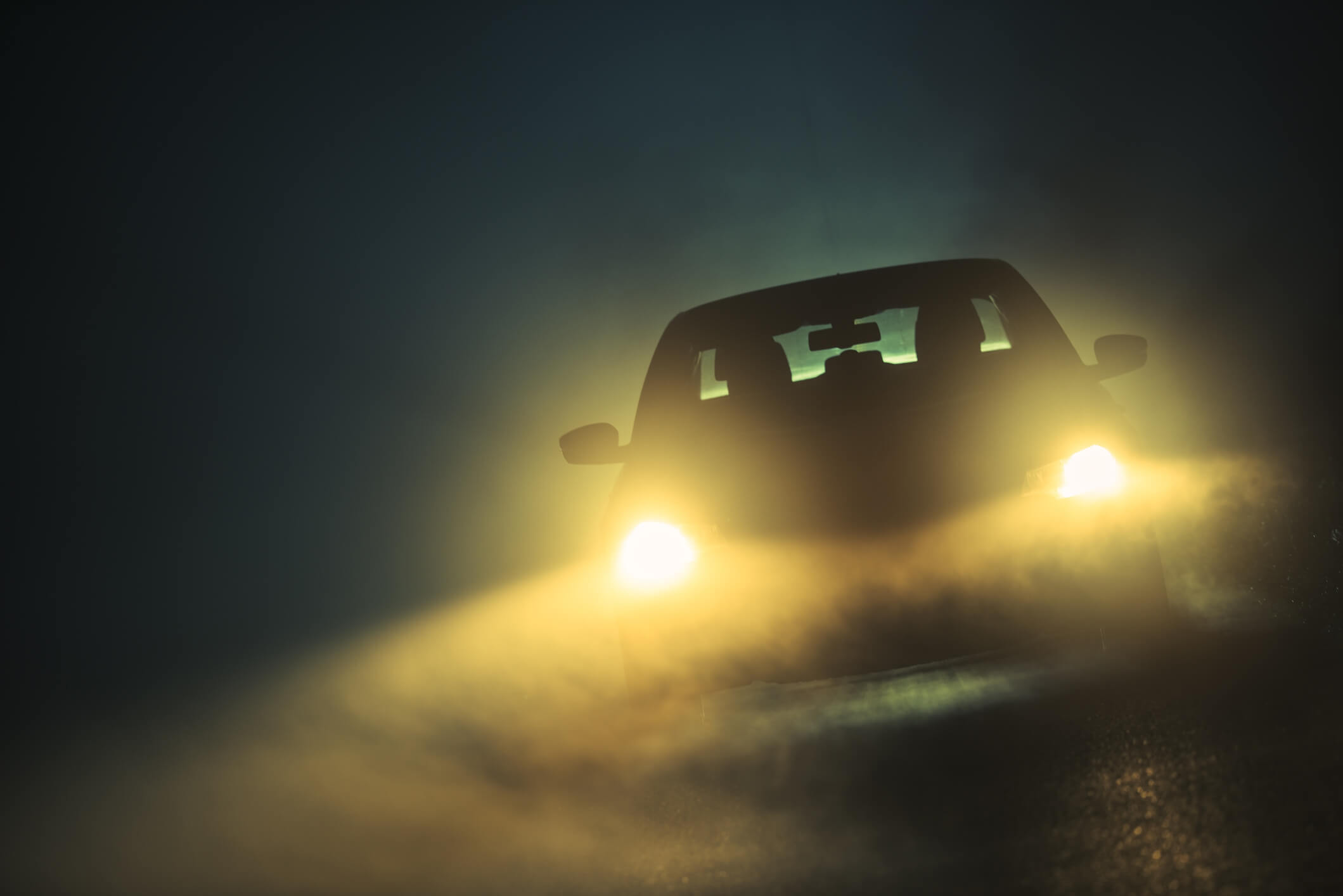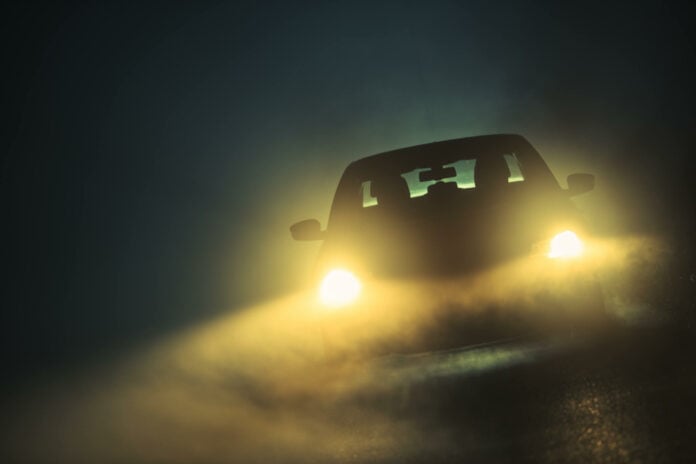The future of automotive headlights is very bright indeed, pun intended. Nonetheless, the path there hasn’t always been as well lit as it is now. With recent technological advances in lighting, we can see more and more cars equipped with better headlights that make for a safer driving experience.
As things progress, there’s been a huge leap forward that will see “smart” headlights that aren’t just brighter but are capable of actively picking out or not illuminating certain subjects on the road. Here’s all you need to know about car headlight technologies available on the market today.
A Brief History of Headlights
Generally, modern headlight technologies can be split into four types. That’s halogen, high-intensity discharge (HID) / xenon, light emitting diode (LED) and laser.

The very first headlights were acetylene gas headlamps and not grouped with the aforementioned four above. You might recall them from old movies in the early 1900s that saw the driver open the glass cover and lighting the element on fire. Yes, it was literally the incandescent light of a flame being vaguely reflected to attempt illuminating the road ahead.
Electricity is a wonderful discovery though, and it has led to the introduction of the first halogen headlights by Italian carmakers in 1962. Although still very much an incandescent light, the bulb housed a small trace of bromide or iodine halogen that resulted in a brighter, yellowish glow.
From there, the next step in automotive lighting was HID lights. Commonly referred to as xenon, it provided a brighter light and was more durable, lasting at least twice as long as a halogen system.
Read More: Adaptive Cruise Control: How Does It Work & Can You Trust It?
Soon came LED lights. Audi were the first to implement them in its Audi A8 as DRLs but Lexus is universally accepted as the first to actually implement LED lighting for the low beams in the headlights of their Lexus LS600h back in 2007.
The latest innovation in car headlight technology though, might sound like something out of science fiction; lasers. Yes, lasers. But fret not, you won’t go blind if you accidentally look into them, as we’ll explain why below. Lasers are naturally the next step in automotive lighting as they offer a near parallel beam of light 1,000 times more intense than LEDs but with less than half the energy requirements.
Pros and Cons of Each Automotive Lighting

Halogens
Pros:
- Affordable, the key reason it remained the default lighting method for decades
- Still widely used in modern cars but limited to entry-level models or base specifications
- The yellowish colour of halogen bulbs are the most effective at penetrating heavy weather such as rain or fog. The longer wavelength of yellow light doesn’t refract as easily to penetrate rain drops and fog
Cons:
- Halogens aren’t as bright as LEDs
- Consumes a lot of energy to heat up the filament
- Creates immense heat within the reflector housing that causes the plastic covers of headlights to turn hazy over time
- Sensitive to road vibrations
- Shortest lifespan
HID / Xenons
Pros:
- HIDs are approximately 100 times brighter than halogens
- Lasts almost 10 times longer
- Produces less heat
- Not prone to damage from vibrations
Cons:
- The system requires a ballast, including an ignitor, to control current. The ballast is used to step up the 12V from the car’s electrical system to 24,000V in order to create a potent spark and ignite the Xenon gas mixture
- More components make packaging an issue
- Develops more heat and often requires cooling fins
- Whitish beam has a shorter wavelength, not as effective at penetrating heavy weather
- High levels of glare, making most factory-fitted systems requiring beam-levelling control to avoid blinding oncoming cars
LEDs
Pros:
- Consumes less energy
- Produces less heat
- Lasts longer than halogens or HIDs
- Slowly becoming increasingly more affordable with time
- Resistant to vibrations
- Smallest in terms of size, making packaging easier and giving designers the flexibility and creative freedom to create much cooler light signatures
- Wider beam, helps peripheral illumination
Cons:
- Aren’t as bright as HIDs
- Still expensive to produce, replacements will be expensive
- Whitish beam more prone to glare in heavy weather as well as on wet roads
Lasers
Pros:
- Longest range, up to 600 meters, double the distance of LEDs
- Over four times brighter, meaning headlights can be more compact in the future
- Around 30 per cent more efficient than LEDs
- Consumes less power, especially useful in EVs
- Offers better control over the direction of the beam
- Doesn’t cause glare
- Won’t slice you in half or burn your eyes if you look at them
Cons:
- Extremely expensive, so it’ll be a while before it’s as mainstream as LEDs but it will get there
Read More: The Importance of Car Tires

Car Headlight Technology FAQs
Nonetheless, to make things a little easier to digest, we’ll jump into a question-and-answer session:
Q1: So, halogens are outdated headlights used only on entry-level cars?
A1: That’s not true at all. Halogens are still very much in use on modern cars. Certain variants of the current Honda City come with halogens. It’s by no means an inferior product. And given the amount of rain we receive, the yellowish beam is a little safer in those conditions as well.
Q2: Are LED headlights still only used on more premium cars?
A2: As technology develops, it becomes cheaper to produce. LEDs have since become less costly to produce and you can find them on a variety of entry-level models. The Perodua Bezza is the most affordable car in Malaysia with LED headlights. In fact, more and more affordable cars are equipped as standard with LED headlights. Remember, while it’s good to have brighter headlights on your car, it’s not the only aspect that makes for a safe car.
Q3: Lasers? Sounds dangerous. Are you sure it won’t slice me in half?
A3: For starters, you’re not actually looking directly at the laser beam. Instead, multiple beams from high-powered diodes are fired through a series of mirrors within the headlight assembly that reflects and focuses the light into a lens filled with yellow phosphorus. The phosphorus creates a bright, intense white light that’s safer for human eyes. You’ll be fine.
Q4: What other benefits do laser headlights have?
A4: Here’s where it gets interesting. The array of mirrors allows laser headlights to spotlight objects of interest such as pedestrians. With the integration of a camera, it can even detect oncoming vehicles and automatically dim the beam on that vehicle to prevent blinding the driver.
On a cooler note, the high-power diodes can essentially turn the road surface into a head-up display as the array of mirrors project information like speed onto the road within the driver’s field of view.
Q5: Can I change the halogen bulb in my car to an LED?
A5: You sure can. There are plenty of aftermarket LED options that will easily replace a halogen bulb and you can even find one with a yellowish tone that’s better in heavy weather. However, you must be sure to get one that mimics the light source of the halogen bulb so that the beam is identical and doesn’t scatter wrongly to blind other drivers. If you can’t find an LED with an identical light source, you can always upgrade to a brighter halogen bulb that will emit a much brighter light.
Buy CARSOME Certified for Peace of Mind
Here at CARSOME, we believe in creating an end-to-end buying journey to eliminate the concerns common in a traditional used car buying experience. CARSOME Certified is the new standard of buying pre-owned cars backed up by our 175-point inspection together with our CARSOME Certified Refurbishment Process. By creating a trusted used car ecosystem, CARSOME Certified guarantees trust, transparency, and choice.
Check out our CARSOME Certified Cars here.
